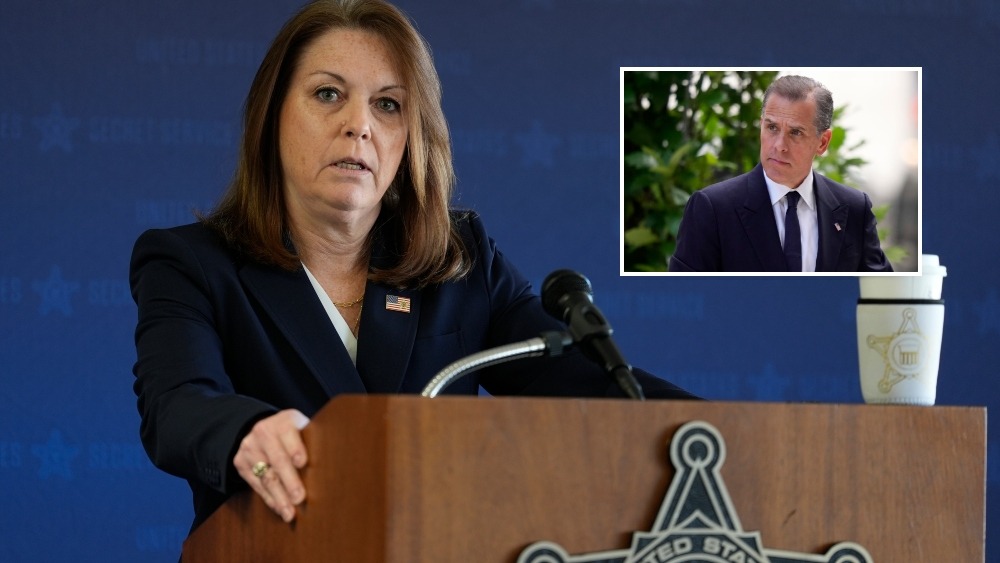On July 2, 2023, the U.S. Secret Service discovered a small amount of cocaine in a cubby area inside a vestibule at the West Executive Avenue entrance of the White House, an area that is frequently accessed by staff and visitors and is used for storing electronic devices. Subsequent tests by the District of Columbia Fire and Emergency Medical Services confirmed the substance was cocaine.
Despite extensive forensic efforts, including fingerprint and DNA analysis by the FBI, no conclusive evidence was found to identify a suspect. The area where the cocaine was found is accessible to many individuals, and the absence of surveillance footage made it impossible to determine who might have brought the substance into the White House. Consequently, the Secret Service closed the investigation due to insufficient evidence.
But now, according to three sources within the Secret Service who spoke to RealClearPolitics, there was a notable disagreement among top officials about how to handle the discovered cocaine. Former Secret Service Director Kimberly Cheatle and other senior leaders reportedly advocated for destroying the substance. However, this proposal faced strong opposition from the Secret Service Forensics Services Division and the Uniformed Division, both of which insisted on preserving the evidence.
RCP noted further:
The discovery of the bag of cocaine posed an unusual problem for Cheatle, who resigned in the face of bipartisan pressure after the July 13 assassination attempt against Donald Trump.
Hunter Biden had a well-documented addiction to cocaine, crack cocaine, and other substances for many years but repeatedly claimed to be sober since 2021, an assertion that has prompted President Biden to often proclaim how “proud” he is of his son. While neither Joe nor Hunter Biden were at the executive mansion when the cocaine was found, it was discovered after a period when Hunter had been staying there.
Cheatle became close to the Biden family while serving on Vice President Joe Biden’s protective detail – so close that Biden tapped Cheatle for the director job in 2022, in part because of her close relationship to first lady Jill Biden.
When the cocaine was first discovered, Cheatle apparently knew it would spark a media firestorm. The incident prompted viral memes about Hunter Biden’s addictions and accusations from Republican political figures, including Nikki Haley, that the Secret Service knew whose cocaine it was and was trying to cover it up.
Typically, the discovery of cocaine or other illegal narcotics within the White House complex or involving the first family and their staff would remain undisclosed. According to the three sources within the Secret Service community, illegal drugs or other contraband discovered in the White House or in the personal residences of the president, first lady, and their family members would typically be disposed of by the president’s and first lady’s protective details—the inner circle of agents assigned to the first family.
However, the bag of cocaine discovered just two days before the July 4 holiday last year was not found by a member of President Biden’s regular detail. Instead, it was uncovered by a member of the Secret Service’s Uniformed Division, which is responsible for protecting the facilities and venues for presidents and other agency protectees, while conducting routine rounds of the White House complex, RCP reported.
Typically, a Technical Security Division (TSD) investigator would be dispatched to handle such situations. These investigators, who often wear hazmat suits, are trained to identify and manage hazardous substances and explosives. However, on the Sunday evening of a holiday weekend, no TSD investigator was called. Instead, a Secret Service officer contacted the District of Columbia Fire and Emergency Medical Services Department, which conducted on-site tests of the white substance and determined it was cocaine before evacuating the White House complex, the outlet said.
Because the press was involved in the evacuation, news of the discovery quickly became public, prompting Secret Service leaders to enter crisis communications mode. The substance and its packaging were handled as evidence and sent to the U.S. Department of Homeland Security’s National Biodefense Analysis and Countermeasures Center for further analysis. Tests conducted at the center also confirmed that the substance did not pose a biothreat or hazardous material risk, noted RCP.
“Other sources familiar with the investigation and Cheatle’s alleged push to destroy the cocaine didn’t know if anyone at the Secret Service ran the DNA material found on the cocaine against a national criminal database,” the outlet reported. “But Secret Service leaders, under pressure from Cheatle and other top agency officials, chose not to run additional searches for DNA matches or conduct interviews with the hundreds of people who work in the White House complex.”
One of the sources noted: “That’s because they didn’t want to know, or even narrow down the field of who it could be,” a source stated. “It could have been Hunter Biden, it could have been a staffer, it could have been someone doing a tour – we’ll never know.”



